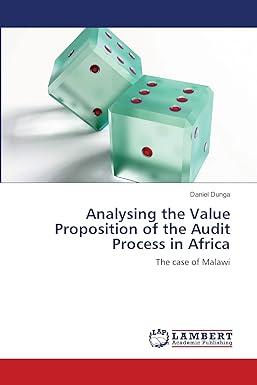
Case 2-2 Music Mart, Inc.* On a sheet of paper, set up in pencil the balance sheer of Music Mart, Inc., as it appears after the last transac- tion described in the text (January 4), leaving consid- crable space berween each item. Record the effect, if any, of the following events on the balance sheet, ei- ther by revising existing figures (cross out, rather than erase) or by adding new items as necessary. At least one of these events does not affect the balance sheet. The basic equation, Assets = Liabilities + Owners equity, inust be preserved at all times. Errors will be minimized if you make a separate list of the balance sheet items atlected by each transaction and the amount (+ or --) by which cach is to be changed. After you have recorded these events, prepare a bal- ance sheet in proper form. Assume that all these trans- actions occurred in January and that there were no other transactions in January 1. The storc purchased and received merchandise for inventory for $5,000, agreeing to pay within 30 days. 2. Merchandise costing $1,500 was sold for $2,300, which was received in cash 3. Merchandise costing $1,700 was sold for $2,620, the customers agreeing to pay $2,620 within 30 days. 4. The store purchased a three-year fire insurance policy for $1,224. paying cash. 5. The store purchased two lots of land of equal size for a total of $24,000. Tt paid $6,000 in cash and gave a 10-year mortgage for $18.000. 6. The store sold one of the two lots of land for $12,000. It received $3,000 cash, and in addition, the buyer assumed $9,000 of the mortgage; that is. Music Mart, Inc., became no longer responsible for this half. 7. Smith received a bona fide offer of $33,000 for the business, although Iris cquity was then only $26,970, he rejected the offer. It was evident that the store had already acquired goodwill of $6,030. 8. Smith withdrew $1,000 cash from the store's bank account for his personal use. 9. Smith took merchandise costing $750 from the store's inventory for his personal use. 10. Smith learned that the individual who purchased the land (No. 6 above) subsequently sold it for $14,000. The lot still cwned by Music Mart, Inc., was identical in value with this other plot. 11. The store paid off $6,000 of its note payable (dis- regard interest). 12. Smith sold one-third of the stock he owned in Music Mart, Inc., for $11,000 cash. 13. Merchandise costing $850 was sold for $1,310. which was received in cash. Professor Robert N. Arthony. Case 2-2 Music Mart, Inc.* On a sheet of paper, set up in pencil the balance sheer of Music Mart, Inc., as it appears after the last transac- tion described in the text (January 4), leaving consid- crable space berween each item. Record the effect, if any, of the following events on the balance sheet, ei- ther by revising existing figures (cross out, rather than erase) or by adding new items as necessary. At least one of these events does not affect the balance sheet. The basic equation, Assets = Liabilities + Owners equity, inust be preserved at all times. Errors will be minimized if you make a separate list of the balance sheet items atlected by each transaction and the amount (+ or --) by which cach is to be changed. After you have recorded these events, prepare a bal- ance sheet in proper form. Assume that all these trans- actions occurred in January and that there were no other transactions in January 1. The storc purchased and received merchandise for inventory for $5,000, agreeing to pay within 30 days. 2. Merchandise costing $1,500 was sold for $2,300, which was received in cash 3. Merchandise costing $1,700 was sold for $2,620, the customers agreeing to pay $2,620 within 30 days. 4. The store purchased a three-year fire insurance policy for $1,224. paying cash. 5. The store purchased two lots of land of equal size for a total of $24,000. Tt paid $6,000 in cash and gave a 10-year mortgage for $18.000. 6. The store sold one of the two lots of land for $12,000. It received $3,000 cash, and in addition, the buyer assumed $9,000 of the mortgage; that is. Music Mart, Inc., became no longer responsible for this half. 7. Smith received a bona fide offer of $33,000 for the business, although Iris cquity was then only $26,970, he rejected the offer. It was evident that the store had already acquired goodwill of $6,030. 8. Smith withdrew $1,000 cash from the store's bank account for his personal use. 9. Smith took merchandise costing $750 from the store's inventory for his personal use. 10. Smith learned that the individual who purchased the land (No. 6 above) subsequently sold it for $14,000. The lot still cwned by Music Mart, Inc., was identical in value with this other plot. 11. The store paid off $6,000 of its note payable (dis- regard interest). 12. Smith sold one-third of the stock he owned in Music Mart, Inc., for $11,000 cash. 13. Merchandise costing $850 was sold for $1,310. which was received in cash. Professor Robert N. Arthony







